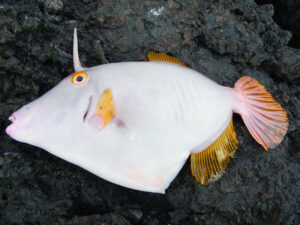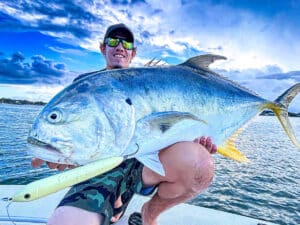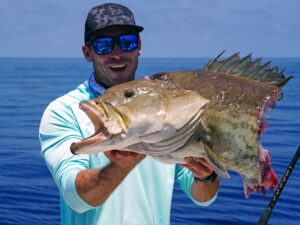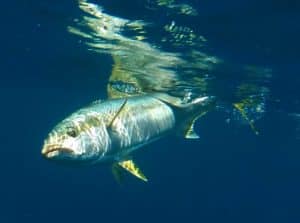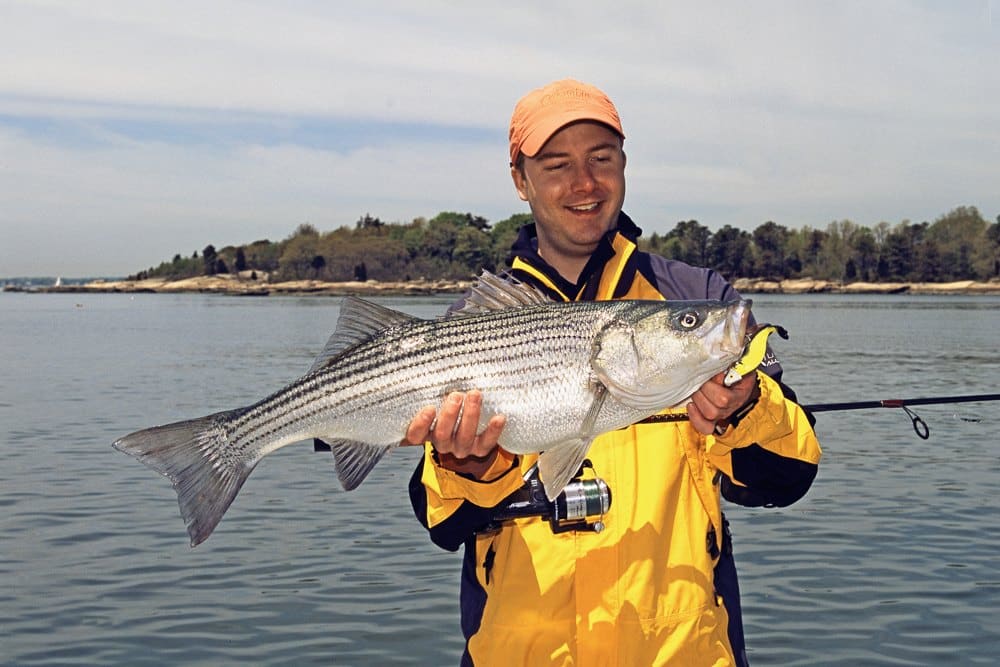
The best striper jigs in the world all have one common attribute: they mimic the natural forage that striped bass-fishing anglers know the predators feed on. Whether you prefer to retrieve them with a snap, a jerk or a gentle wave of the rod, a little added input from a savvy angler can make a striper jig look to striped bass just like those bunker, herring, sand eels and silversides.
The best thing about jigs is their versatility. Most can be fished throughout the water column, whether that means a zippy retrieve up near the surface while bass are busting on top, or slowly bouncing along the bottom to wake up lethargic fish that are hiding down deep. Most striped bass jigs can be tipped with bait if that’s what it takes to generate bites. And the vast majority of jigs out there can also be used with multiple techniques ranging from vertical jigging, to casting and retrieving, to trolling.
Bucktail Jig for Stripers
The classic example of a striped bass jig is the bucktail. Bucktail jigs consist of a lead head on a hook dressed with the hairs from a deer tail. Yes, a bucktail jig for stripers really does have parts of a buck’s tail on it. At least, historically they have. Today, you can also find bucktail jigs tied with nylon hairs, tinsel, and rubber filaments. Yet still, no matter how many tackle stores you visit, it’s quite unlikely you’ll ever find one that doesn’t have a selection of traditional deer-hair-tied bucktail jigs for sale.
Bucktails often work best when used in tandem with a “sweetener,” like a soft-plastic twister-tail or a natural strip bait added onto the hook. Many anglers prefer those with contrasting colors between the head and hair; some anglers swear by styles that have large eyes; and others like bucktails that have dark hair on the back and lighter hair underneath, matching a baitfish’s natural coloration.
How to Fish a Bucktail Jig for Stripers
When it comes to the techniques usually used when bucktail-jig-fishing for striped bass, much depends on the specific area and situation. In the shallows and when fish are near the surface, striped bass angler commonly cast and retrieve jigs, giving them a lifelike action by twitching the rod tip every few seconds. If the fish are staging along a drop-off or over structure, it’s common to cast the bucktail and allow it to sink to the fish’s depth, then work it back to the boat with sharp snaps of the rod. And when the fish are sitting on bottom or holding very tight to structure, many anglers will try to position their boat directly over the hotspot and jig the lure up and down right in front of the fishes’ noses.
Trolling striped bass jigs is a tactic that shines when the fish are scattered over large areas, and bucktails are ideal in this situation. This is one of the scenarios in which those who use bucktail jigs for stripers usually add some sort of attractor that gives the jig a more life-like look. Historically, pork-rind strips were used for this purpose, though today, far more anglers choose a soft-plastic twisty tail or shad-style paddletail to give trolled striper jigs more appeal.
Are Soft Plastics The Best Jigs For Stripers?
Soft plastics on jigs means dressing the hook on a lead-head with a changeable plastic tail. Many modern anglers would argue that today’s soft plastics make the best striper jigs of all. It’s certainly a debatable point, but soft-plastic striped bass jigs do have some distinct advantages over traditional bucktail jigs. First and maybe most importantly, they allow for blindingly-fast lure changes since you can quickly and easily pull off one tail and slide another onto the jig head in a matter of seconds. That means you can swap through every color in the rainbow, until you find which one the fish are most attracted to at any given time.
You can also change body sizes and shapes to match the moment. For example, a long, slender tail may be ideal when the fish are chasing long, slender baitfish. But if they’re feeding on fish with a larger profile, a deep-body paddle tail might generate more strikes. And you can offer the fish either one and switch things up at the drop of a hat. Just remember that bigger lures often catch bigger fish, and you never know when a record striper is nearby.
Along with bucktail jigs and soft plastics, there are, of course, other types of striper jigs. Some anglers like to use jigging spoons, which are great for vertical jigging since they sink quickly and their weight helps them stay deep. Feather jigs, similar to bucktails but tied with chicken feathers, are preferred by others. And there are countless variations to all of these different options. But when all is said and done there’s one irrefutable truth: Striped bass jigs catch fish, and they belong in every angler’s tackle box.

